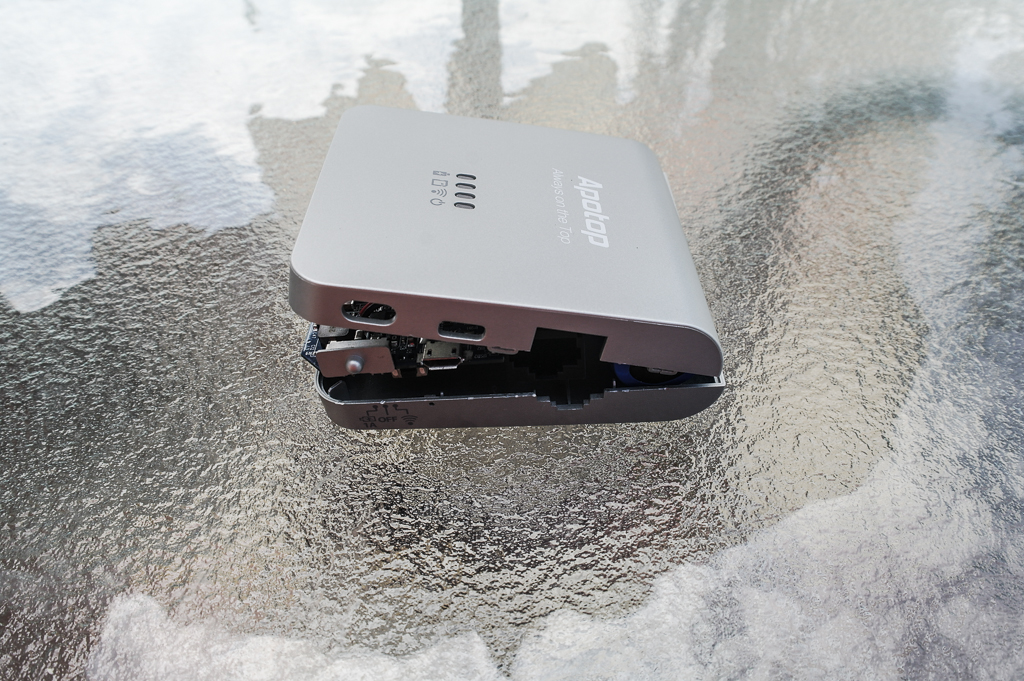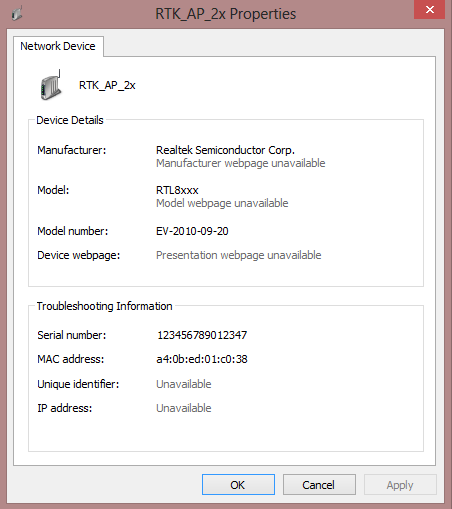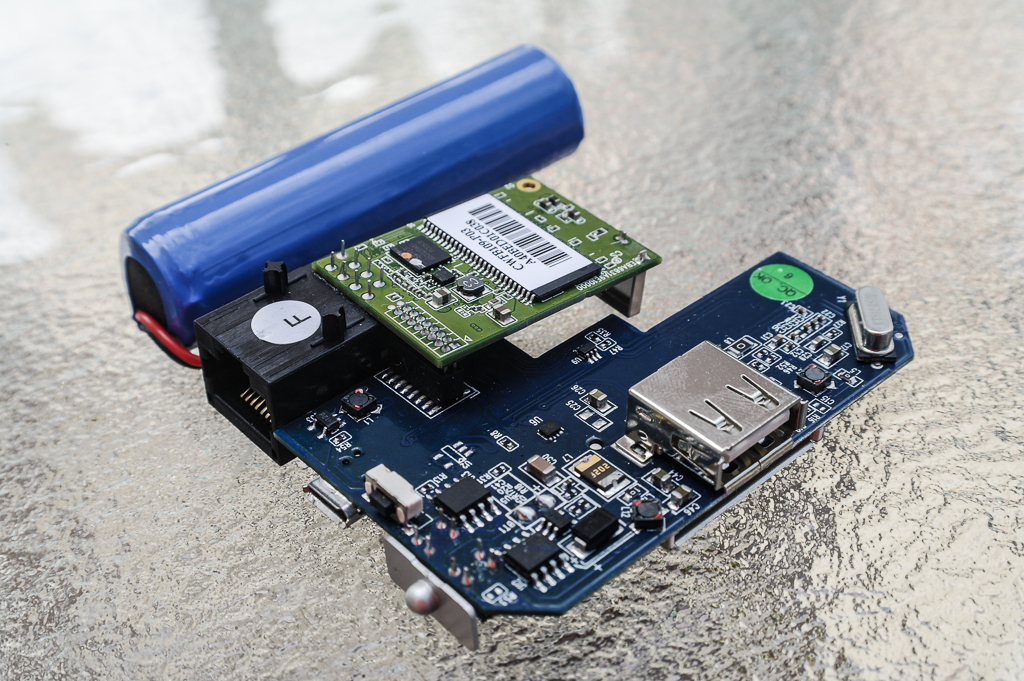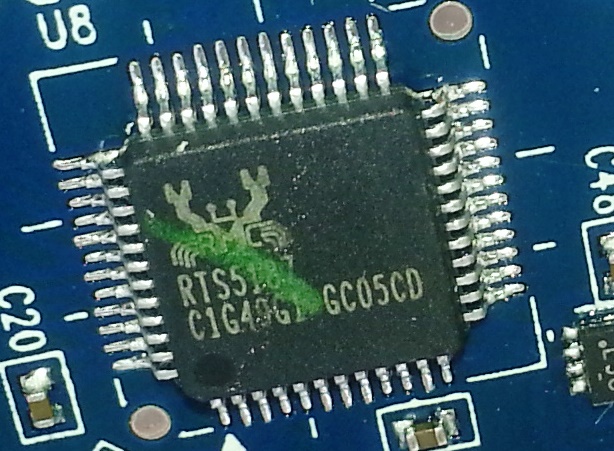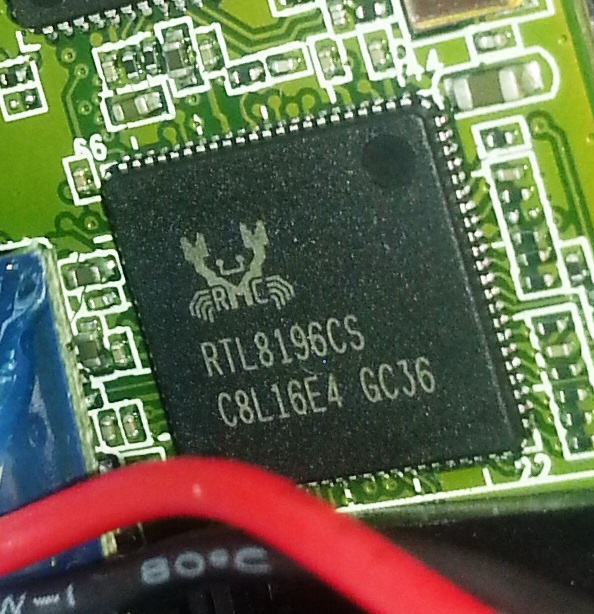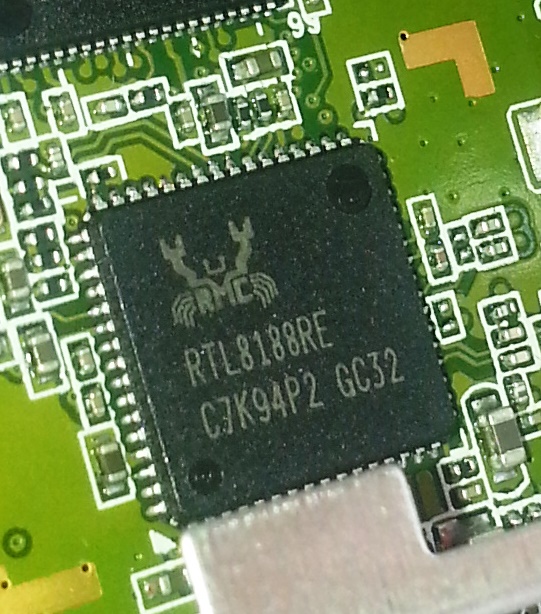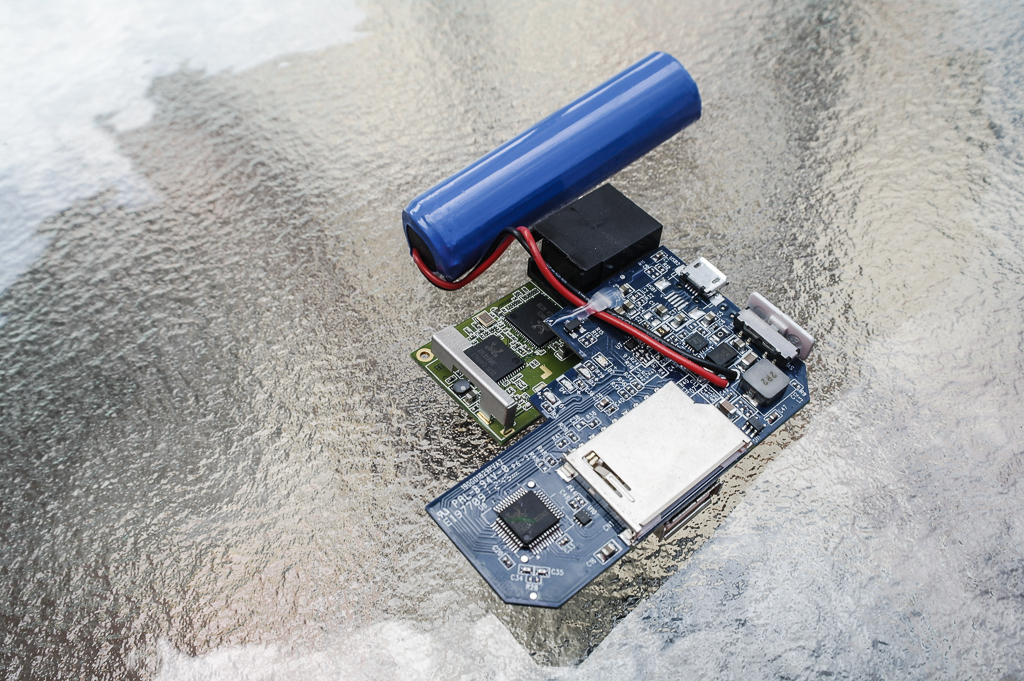INTERIOR AND CLOSER LOOK
Normally we would not open a device such as this for two main reasons – voiding warranty and marking the unit. While the DW17 Wi-Reader Pro is small, it has no screws; hence it is entirely made out of two all-plastic shells that latch onto each other and sandwich the internal components in between:
The reasons we dug in for a closer look with the DW17 were because of its interesting firmware and the enticing presence of a full-fledged 10/100Mbps ethernet port.
As a side, Windows uPnP automatically detected via LAN that the DW17 contained a Realtek chipset as noted by the RTL8XXX moniker; while it was accurate, Windows did not give us a precise model:
Before getting to the integrated controllers, let us look at the layout on the internal components. Overall the build quality is good, although there is not much going on inside. The two boards are connected via the pin PCI-E interface, while a dab of glue holds the red and black wires in place – originating from the big blue lithium ion 18650 2600mAh 3.7V battery which gives the DW17 its rounded back:
The card reader, USB, micro USB, and power inputs are all controlled on one PCB (the larger main/motherboard). The smaller (daughterboard) is pin-connected to the larger utilizing PCI-E, and manages the ethernet side of things – both the 10/100Mbps hard-wired and the wireless radio:
Right, now on the mainboard we have the Realtek RTS5187 controller which manages both the USB 2.0 port and the SD card reader slot:
Ethernet operates via two Realtek chips – the RTL8196CS and the RTL8188RE. Specifically, the ethernet 10/1000Mbps LAN/WAN port is managed by the RTL8196CS IEEE 802.11n AP/router network processor:
…while the wireless radio signal is handled by the RTL8188RE IEEE 802.11b/g/n 1T1R PCI-E WLAN controller:
Both of these IC’s were produced in 2010, matching the Windows ‘EV-2010’ model number. These are Realtek Active-ECO power saving low-profile, minimal-footprint controllers; therefore relatively cheap and small, and perfect for the tiny form-factor of the DW17 Wi-Reader Pro. Unfortunately like most Realtek and non-Broadcom chipsets, these are not incompatible with DD-WRT/Open-WRT/Tomato custom firmwares.
Again the build quality is good, but the layout could have been better. The unit tends to get quite hot exclusively at the bottom when used for long periods of time and when it is under load; the Realtek network controllers, regardless of the Active-ECO low power rating, do produce a fair amount of heat, especially in the DW17 enclosure which lacks any form of cooling and ventilation. It will not get excessive, but a few ventilation holes/grills and/or a passive cooling design would have been preferred for longevity’s sake.
 Technology X Tomorrow's Technology Today!
Technology X Tomorrow's Technology Today!


